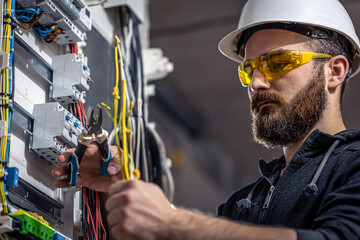Solar Panels Darwin are a crucial step in combating climate change and decreasing our dependence on fossil fuels. Solar power also lowers electricity bills, resulting in substantial savings over time.
Various grants and financial schemes are available, depending on where you live, such as 0% VAT and the Smart Export Guarantee. These can help you break even on your investment much faster.

Solar Panel Installation
Solar energy systems provide clean, safe, and reliable power for homes at a lower cost than traditional electricity. They’re also a great way to become more environmentally responsible. But, while going solar is easier than ever thanks to financing options, federal financial incentives, and local energy rebates, homeowners must understand how much they’ll spend on a solar installation and the costs associated with maintaining their system.
The most significant upfront cost of a residential solar energy system is the purchase and installation of the panels themselves. The initial investment will be offset by reduced utility bills and the value of a home that is producing renewable electricity.
A solar installer will first evaluate a home’s suitability for a solar system, including the size of a homeowner’s monthly energy consumption and the amount of sunlight a property receives. This information will help the installer determine which solar panel system size to recommend for a homeowner.
When the time comes to install a solar panel system, a reputable company must be chosen to complete the project. A licensed contractor can ensure that the project complies with local regulations and that the necessary permits are acquired. In addition, a licensed solar contractor can also offer advice on how to best integrate the system into a new home’s design without impacting aesthetics or structural integrity.
Once the work site is prepared, the solar installation team will begin working on the solar array. They’ll begin by installing the mounting system on the roof, ensuring that there are no trees or other obstacles blocking sunlight from reaching the solar panels.
Next, the installer will install a meter to track energy production. The meter will allow the home to sell excess power back to the utility grid. Once the installation is completed, a local inspector will conduct a final inspection before the system can be connected to the grid.
Solar panel systems require minimal maintenance once they’re installed, but homeowners must keep an eye on their system and keep it free from debris. A professional can perform regular inspections for around $150, which includes cleaning and washing the solar panels.
Solar Panel Maintenance
Solar panel installation can seem daunting, but once it’s complete, maintenance and cleaning are relatively easy. The frequency of this maintenance depends largely on climate, location, and the type of solar panel system. Solar panel cleaning should be performed regularly to remove dirt, dust, and debris from the panels, maximizing energy output. It’s also a good idea to trim back trees or other structures that could obstruct sunlight.
Fortunately, solar panels are designed to be resilient and can withstand most weather conditions. However, they do lose efficiency when exposed to excessive heat, and a loss of up to 1% per degree Celsius is normal.
If your home experiences excessive solar panel degradation or a sudden drop in power output, you may need to schedule a repair or replacement. The best way to determine if you need this service is by checking your solar energy production using the monitor set up by your installer. This software will provide you with historical data on energy output, which you can compare to current output.
If you do notice a difference, there is likely an underlying issue, such as physical damage, an arc fault, or a defective component. If this is the case, a technician should be called in to assess the situation and make any necessary repairs.
Depending on the severity of the damage, this maintenance may include securing cables and fittings to prevent them from being pulled or tampered with. Additionally, it’s important to regularly test the emergency shut-off function, ensuring that it will activate when needed.
In addition to these regular maintenance tasks, you’ll want to keep an eye on any physical damage that occurs to your solar panels. For example, any cracks or chips in the panels should be addressed immediately as they can significantly impact energy production. It’s also a good idea to check the roof for any signs of water leakage.
It’s not uncommon to find solar panel companies that specialize exclusively in operations and maintenance (O&M). These professionals can perform many of the same tasks as a general contractor and can save you time and money by handling everything for you. Whether it’s a rooftop installation or ground-mounted panels, these experts can ensure that your solar energy production is as high as possible for years to come.
Solar Panel Repair
Despite their relatively simple function of converting sunlight into electricity, solar panels are complex pieces of technology that require delicate maintenance. If left unattended, even small problems can impact performance and energy output significantly.
When choosing a solar panel repair service, consider a variety of factors such as pricing structures, customer service and communication skills, and availability. Obtain detailed quotes inclusive of all costs to compare with market rates for similar services. Look for a company that offers transparent, upfront pricing to prevent surprises. Reliable service providers will promptly address inquiries and keep you updated on the status of repairs.
A reputable and qualified professional should be able to conduct visual inspections to identify any physical damage or issues that may affect your system’s ability to produce energy. For example, a physical problem like dirt accumulation on the solar panels may reduce their efficiency or increase power consumption, while loose connections within your PV system can lead to a reduction in electrical output.
You should also keep an eye on your energy production compared to your expected average. A sudden drop in power output might indicate that your solar panel system is obstructed by something and needs cleaning or more extensive maintenance.
If your solar panels are damaged, repairing them may be an option depending on the extent of the damage and whether your installer’s warranty covers the repair. However, a better alternative is replacing the damaged panels. This can be done without compromising any existing warranties, and will not only help you save on maintenance fees but also reduce your carbon footprint.
Physical damage to your PV system can occur from severe weather conditions, including wind, hail, and rain. It is recommended that you do a thorough visual inspection following any extreme weather events to check for any dislodgment or debris accumulation on your solar panels. Moreover, you should check to see if any of your panels have been affected by dents or scratches, which can interfere with sunlight’s flow across the photovoltaic cells, reducing their efficiency and leading to power loss.
Solar Panel Recycling
Solar energy is a clean, sustainable form of electricity that provides a variety of benefits for homeowners and society as a whole. It helps lower your electric bills, reduces greenhouse gas emissions, and supports local economies. But what happens when your solar panels reach the end of their lifespan? It’s important to know that a proper, sustainable solar panel recycling process is in place before you install your solar system.
While most a solar panel can be recycled, there are still some limitations on the amount that can be recovered. One major factor is that it’s hard to break down a solar panel into individual components. The plastic layer that protects a solar panel from the elements, for example, must be heated to break it down.
Currently, only about 10 to 15 percent of a solar panel’s materials are being recycled, according to Tao. This is due to high costs and technical complexity. However, as the solar industry grows, there is hope for increased rates of solar panel recycling.
For example, the aluminum frame and glass of a solar panel have great value as building materials. However, the solar cells and internal wiring are more difficult to recycle. Solar cell technology is evolving, and researchers have found ways to separate these elements from the rest of the solar panel without using harsh chemicals.
Ultimately, we need to change the way we think about solar systems. Instead of thinking about solar as an expensive, upfront investment, we need to start seeing it as a long-term financial asset that can help us live in a more resilient, sustainable way.
If you are ready to make the switch to solar, be sure your installer is properly licensed and certified by your state electrical board or local building department. You can check this by contacting your utility company or visiting your state’s website for more information.
Ideally, you should also choose a solar panel installation provider that participates in a “solarize” program. This program enables you to work with a pre-vetted solar contractor and receive a discounted system price.

